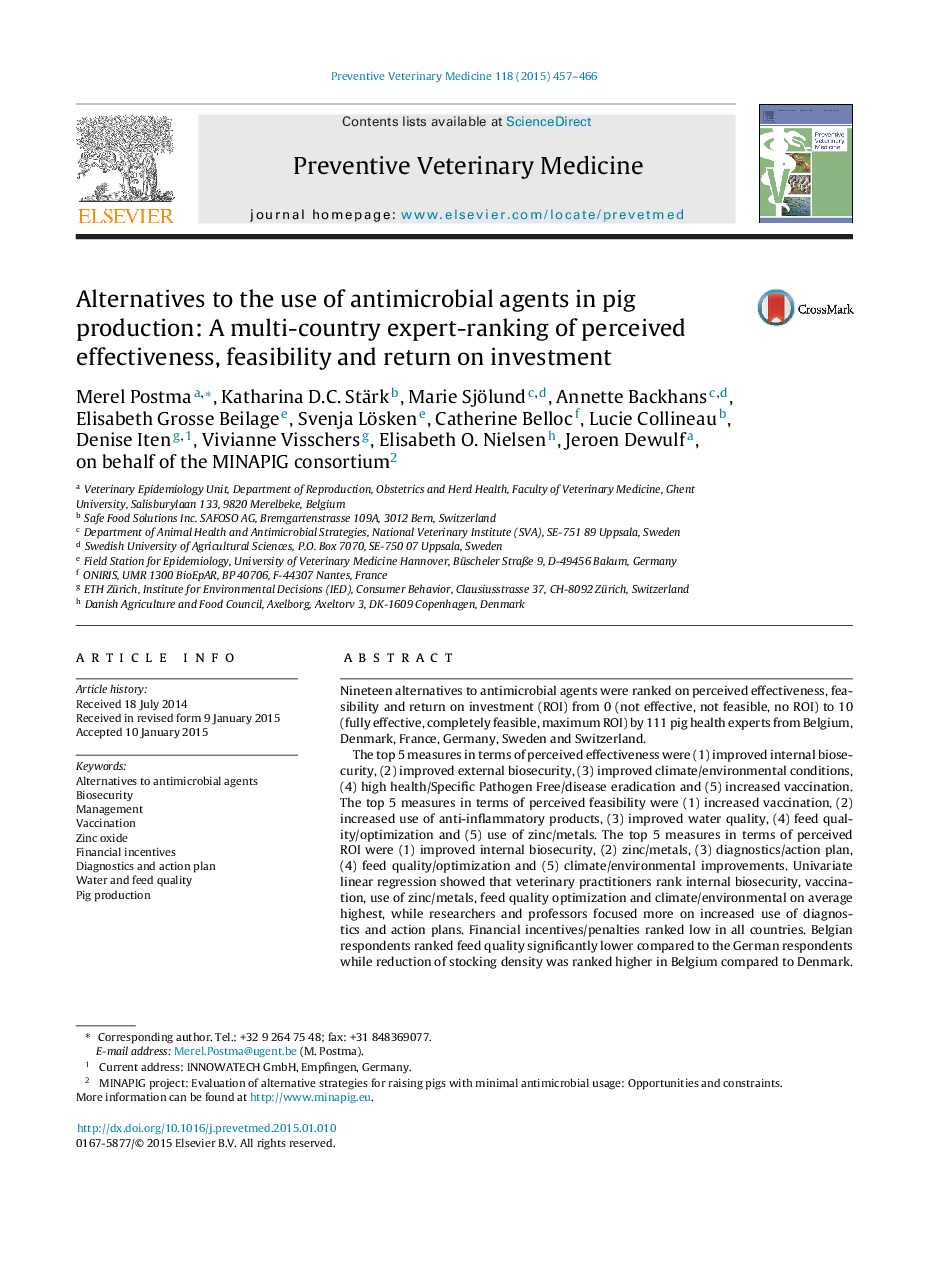| Article ID | Journal | Published Year | Pages | File Type |
|---|---|---|---|---|
| 2452475 | Preventive Veterinary Medicine | 2015 | 10 Pages |
•111 Pig health experts, 6 European countries.•Top 5 alternative measures to antimicrobial usage in pig production based on perceived effectiveness, feasibility and return on investment.•Improved biosecurity, increases use of vaccination, use of zinc or metals, feed quality improvement, regular diagnostic testing combined with a clear action plan.•Differences in perceptions in European countries.
Nineteen alternatives to antimicrobial agents were ranked on perceived effectiveness, feasibility and return on investment (ROI) from 0 (not effective, not feasible, no ROI) to 10 (fully effective, completely feasible, maximum ROI) by 111 pig health experts from Belgium, Denmark, France, Germany, Sweden and Switzerland.The top 5 measures in terms of perceived effectiveness were (1) improved internal biosecurity, (2) improved external biosecurity, (3) improved climate/environmental conditions, (4) high health/Specific Pathogen Free/disease eradication and (5) increased vaccination. The top 5 measures in terms of perceived feasibility were (1) increased vaccination, (2) increased use of anti-inflammatory products, (3) improved water quality, (4) feed quality/optimization and (5) use of zinc/metals. The top 5 measures in terms of perceived ROI were (1) improved internal biosecurity, (2) zinc/metals, (3) diagnostics/action plan, (4) feed quality/optimization and (5) climate/environmental improvements. Univariate linear regression showed that veterinary practitioners rank internal biosecurity, vaccination, use of zinc/metals, feed quality optimization and climate/environmental on average highest, while researchers and professors focused more on increased use of diagnostics and action plans. Financial incentives/penalties ranked low in all countries. Belgian respondents ranked feed quality significantly lower compared to the German respondents while reduction of stocking density was ranked higher in Belgium compared to Denmark. Categorical Principal Component Analysis applied to the average ranking supported the finding that veterinary practitioners had a preference for more practical, common and already known alternatives.The results showed that improvements in biosecurity, increased use of vaccination, use of zinc/metals, feed quality improvement and regular diagnostic testing combined with a clear action plan were perceived to be the most promising alternatives to antimicrobials in industrial pig production based on combined effectiveness, feasibility and ROI.
